
Floor sanding can dramatically transform the look of your home, but it’s important to approach the task with safety in mind. Whether you’re planning a DIY project or hiring professionals, understanding and implementing safety measures is crucial. Here are essential floor sanding safety tips for homeowners in London to ensure a smooth and hazard-free experience.
- Prepare Your Space
Clear the Area:
- Remove Furniture and Rugs: Before starting, clear the room of all furniture, rugs, and decor items. This not only protects your belongings but also provides ample space to work safely.
- Seal Off the Area: Use plastic sheeting to seal off doorways and vents to prevent dust from spreading to other parts of your home.
Inspect the Floor:
- Check for Protruding Nails and Staples: Ensure there are no nails, staples, or screws sticking out, as these can damage the sanding equipment and pose injury risks.
- Use the Right Equipment
Rent or Buy Quality Equipment:
- Choose Reliable Tools: Invest in or rent high-quality sanding equipment. Ensure the sander is in good working condition to prevent malfunctions that could cause accidents.
- Dust Collection Systems: Opt for sanders with integrated dust collection systems to minimize dust and improve air quality.
Wear Protective Gear:
- Dust Masks and Respirators: Wear a dust mask or respirator to protect yourself from inhaling fine dust particles.
- Safety Glasses: Use safety glasses to shield your eyes from dust and debris.
- Hearing Protection: Sanding machines can be loud, so use earplugs or earmuffs to protect your hearing.
- Work Gloves: Wear gloves to protect your hands from splinters and abrasions.
- Ventilation and Dust Management
Ensure Proper Ventilation:
- Open Windows: Keep windows open to allow fresh air to circulate and help disperse dust and fumes.
- Use Fans: Position fans to direct dust out of the room and improve airflow.
Dust Control:
- Frequent Vacuuming: Regularly vacuum the area to remove dust and debris. Use a vacuum with a HEPA filter for the best results.
- Wet-Dry Vacuum: A wet-dry vacuum can be particularly effective in managing dust during the sanding process.
- Safe Handling of Chemicals and Finishes
Choose Low-VOC Products:
- Healthier Options: Select finishes and stains with low volatile organic compounds (VOCs) to reduce harmful emissions and improve indoor air quality.
Proper Storage:
- Store Safely: Keep all chemicals, finishes, and solvents in their original containers, tightly sealed, and stored in a cool, dry place away from children and pets.
Application Precautions:
- Follow Instructions: Carefully follow the manufacturer’s instructions when applying finishes and stains. Ensure the room is well-ventilated during application and drying.
- Dispose of Rags Safely: Rags used with oil-based products can spontaneously combust. Dispose of them in a metal container with a lid, or soak them in water before discarding.
- Electrical Safety

Check Electrical Cords:
- Inspect Cords: Before using sanding equipment, inspect the electrical cords for any signs of wear or damage. Replace any damaged cords immediately.
- Avoid Overloading Circuits: Ensure that the power supply can handle the load of the sanding equipment. Avoid plugging multiple high-power tools into the same outlet.
Extension Cords:
- Use Proper Extension Cords: If using an extension cord, make sure it is heavy-duty and rated for the power requirements of the sander.
- General Safety Practices
Keep Children and Pets Away:
- Restricted Area: Ensure that children and pets are kept out of the work area to prevent accidents and exposure to dust and chemicals.
Take Breaks:
- Avoid Fatigue: Floor sanding can be physically demanding. Take regular breaks to avoid fatigue, which can lead to mistakes and accidents.
Stay Informed:
- Read Manuals: Familiarize yourself with the operation manuals of your equipment. Understanding how to properly use and maintain your tools can prevent accidents.
Conclusion
Floor sanding can be a rewarding project that revitalizes your home, but it must be approached with caution and preparation. By following these safety tips, London homeowners can ensure a safe and successful floor sanding experience. Whether you’re tackling the job yourself or supervising professionals, prioritizing safety will lead to better results and a healthier home environment. Stay informed, use the right tools, and protect yourself and your family to enjoy the beauty of freshly sanded floors.


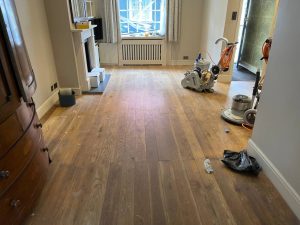
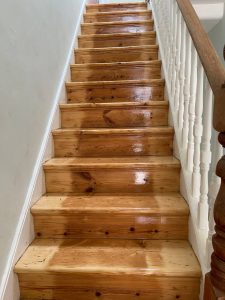
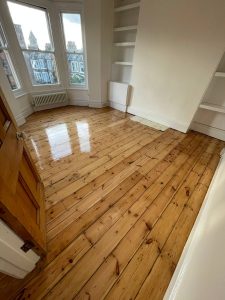

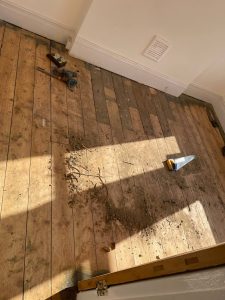
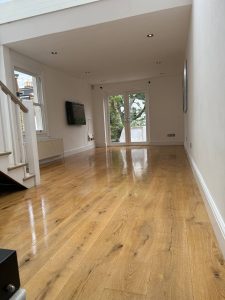
Floor sanding and renovation and installation services in Greenwich
Greenwich: A Historic Gem of London Greenwich is one of London’s most historic and picturesque[Read more...]
Gap Filling
This is a process during which gaps between the floor boards are filled. We fill[Read more...]
Buffing and one coat finish
[Read more...]
WOOD FLOOR SANDING AND LACQUERING/SEALING
[Read more...]
Hardwood vs. Engineered Wood: Which is Better for Sanding?
When it comes to choosing the right flooring for your home, understanding the differences between[Read more...]
How to Extend the Life of Your Sanded Floors
Sanded floors can dramatically enhance the aesthetic appeal and value of your home. To ensure[Read more...]
How to Choose the Right Sealant for Your Sanded Floors
How to Choose the Right Sealant for Your Sanded Floors Choosing the right sealant[Read more...]
The Benefits of Dust-Free Floor Sanding
The Benefits of Dust-Free Floor Sanding Experience a Cleaner, Healthier Home Environment with Innovative[Read more...]
Polishing the floor in london
[Read more...]
How to Handle Heavy Furniture on Sanded Floors
How to Handle Heavy Furniture on Sanded Floors Protect your wooden floors from[Read more...]